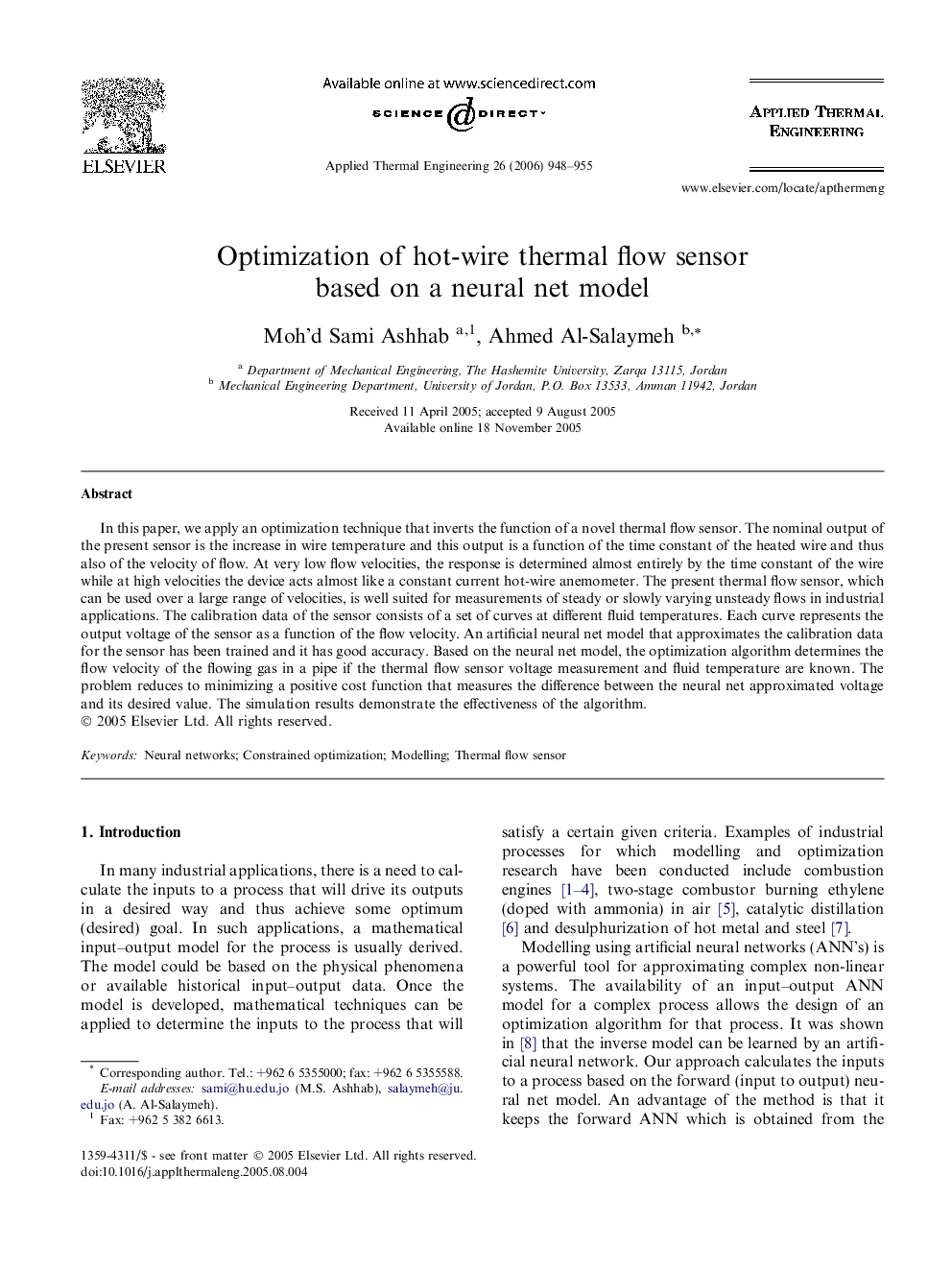| Article ID | Journal | Published Year | Pages | File Type |
|---|---|---|---|---|
| 649807 | Applied Thermal Engineering | 2006 | 8 Pages |
In this paper, we apply an optimization technique that inverts the function of a novel thermal flow sensor. The nominal output of the present sensor is the increase in wire temperature and this output is a function of the time constant of the heated wire and thus also of the velocity of flow. At very low flow velocities, the response is determined almost entirely by the time constant of the wire while at high velocities the device acts almost like a constant current hot-wire anemometer. The present thermal flow sensor, which can be used over a large range of velocities, is well suited for measurements of steady or slowly varying unsteady flows in industrial applications. The calibration data of the sensor consists of a set of curves at different fluid temperatures. Each curve represents the output voltage of the sensor as a function of the flow velocity. An artificial neural net model that approximates the calibration data for the sensor has been trained and it has good accuracy. Based on the neural net model, the optimization algorithm determines the flow velocity of the flowing gas in a pipe if the thermal flow sensor voltage measurement and fluid temperature are known. The problem reduces to minimizing a positive cost function that measures the difference between the neural net approximated voltage and its desired value. The simulation results demonstrate the effectiveness of the algorithm.
